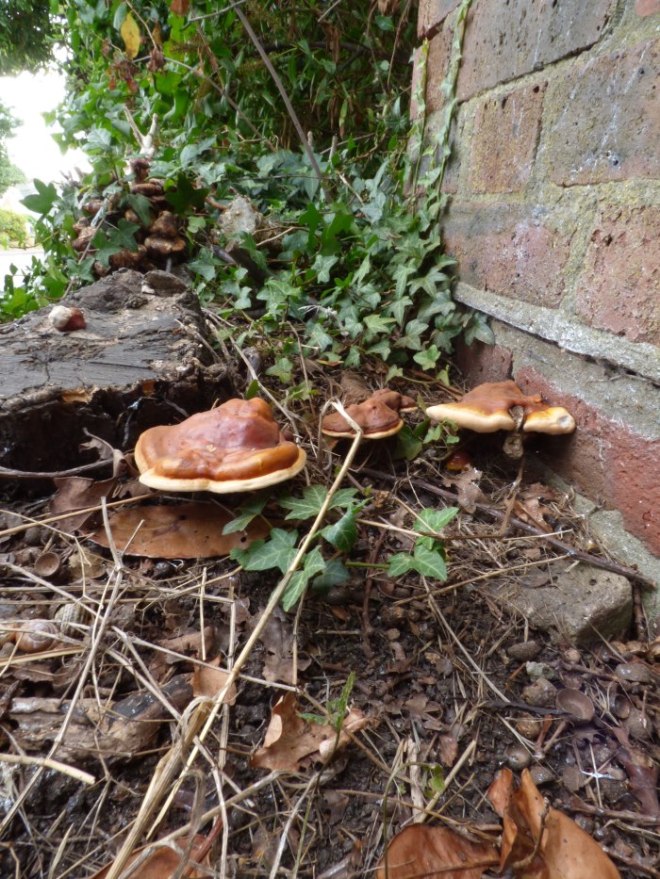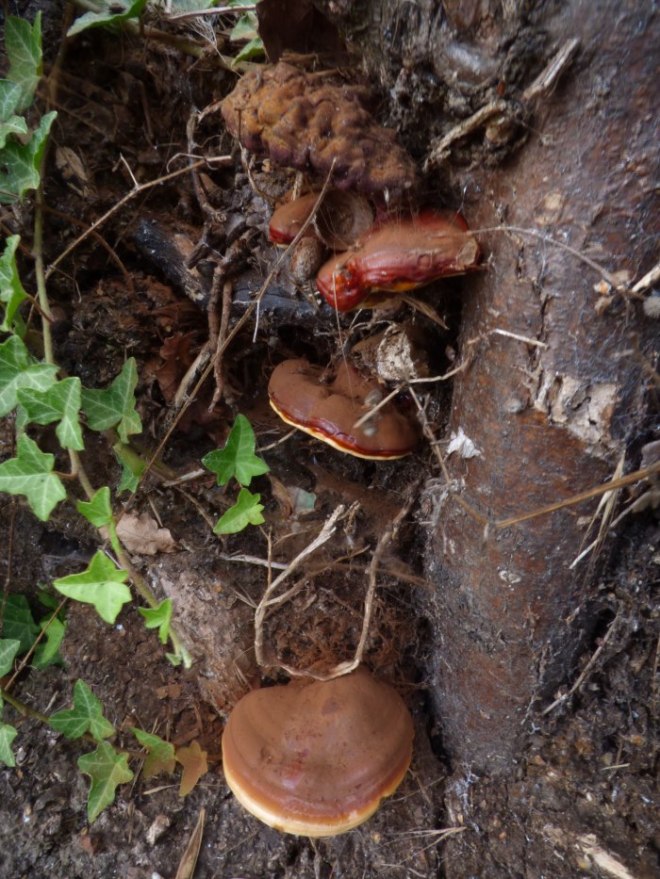So this is a very quick one but I wanted to share it as it’s actually really cool. As I am reading through Fungal Decomposition of Wood, on page 149 the authors detail that Ganoderma lucidum produces two types of spore from its basidia during its reproductive phase (where a fruiting body is present). Specifically, when the fruit body is young, thin-walled basidia are produced that germinate very readily on any suitable wood substrate that they may land upon (which is a slim chance anyway), though as the fruit body ages the type of spore differs to become much thicker-walled and – if it is to have any decent chance of germinating if it were to land on a suitable substrate – must first pass through the gut of fly larvae.
Of course, this differentiation in spore type (by where the former spore type is dubbed a ‘proterospore’) has implications for effective dispersal. The former thin-walled proterospores are to have a principal means of effective dispersion via air currents, and may indeed be released during the summer months when it is drier and therefore wind dispersal is more effective (assuming we apply a crude phenology to Ganoderma lucidum, and posit that a hymenium is produced and releases spores by summer time – late June through to late August). However, the thicker-walled spores produced in later stages of the fruiting body’s life (being an annual bracket, it will often senesce come late autumn, generally-speaking) would require either larval tunneling through the mature fruiting body and consuming spores along the way (which they then deposit elsewhere on possibly suitable wood substrates) or by larvae consuming spores where the spores were deposited by the air currents / other means. Larval tunneling could also take place after the bracket’s senescence, when some spores will still probably be ‘trapped’ within the tubes.

If we are to accept that mature and active fruiting bodies are more likely to be host to tunneling insects, by virtue of: (1) the fruiting bodies being often sufficiently larger in size to allow for effective tunneling in a sheltered environment not at much risk of suddenly being aborted by the ‘parent’ mycelium and also possessing a greater supply of nutrients, and (2) because they have been in the environment for a longer period of time (thereby overlapping with ovipositioning of more insect species and generations), the second type of spore production actually makes logical sense. Furthermore, climatically-speaking, rain usually becomes ever more frequent as we approach late summer to early-mid autumn (when the Ganodermas are often still very much active, and the annual brackets of Ganoderma lucidum and Ganoderma resinaceum are typically fully mature – if not close to becoming so), and therefore wind dispersal perhaps becomes ever more challenging for polypores that depend upon dry conditions in which they can release spores effectively. In fact, and again it’s only my hypothesis, but as rain can drive spores onto and into the ground (as they are caught up in rain droplets, etc), the dispersal of these thick-walled spores might also provide them with the chance to be consumed by soil-dwelling insect larvae or ones that forage close to the ground, in place of upon fungal fruiting bodies or within their direct vicinity. When we note that Ganoderma lucidum can also fruit out from underneath the ground, it gives this theory time for a little more consideration. Thus, the potential scope of insect consumers increases quite extensively.
The caveat here is, as is most certainly evident, a lot of my own thoughts have expanded upon the initial statement in Fungal Decomposition of Wood. Thus, I may be spouting utter nonsense! Regardless, I hope it stimulates some thought, which is the most critical thing. As this book was written almost three decades ago and the research into Ganoderma lucidum spores was first published in 1982 by Nuss (cited below – it’s in German), there may have been developments since then that further explain this biological characteristic. At the very least however, this demonstrates that a spore is not just a spore, and that the mycological world is admirably complex.

Sources:
Nuss, I. (1982) Die Bedeutung der Proterosporen: Schlußfolgerungen aus Untersuchungen an Ganoderma (Basidiomycetes). Plant Systematics and Evolution. 141 (1). p53-79.
Rayner, A. & Boddy, L. (1988) Fungal Decomposition of Wood: It’s Ecology and Biology. UK: John Wiley & Sons.

I saw Dr Rayner give a lecture on fungal interactions in wood at Epping Forest about 30yrs ago, I still have the notes! it was ground breaking at the time . One of his observations was that trees could already have latent fungal mycelium growing in from a young age, some protective like Trichoderma, but also found Ganoderma, which created battle ground between fungi species in the wood!
LikeLike
That’s really awesome that Ganodermas are found from a young age. Not sure if anything further has been eludicated to since with that one, at least that I know of. Are the notes course handouts or ones you made?
LikeLike